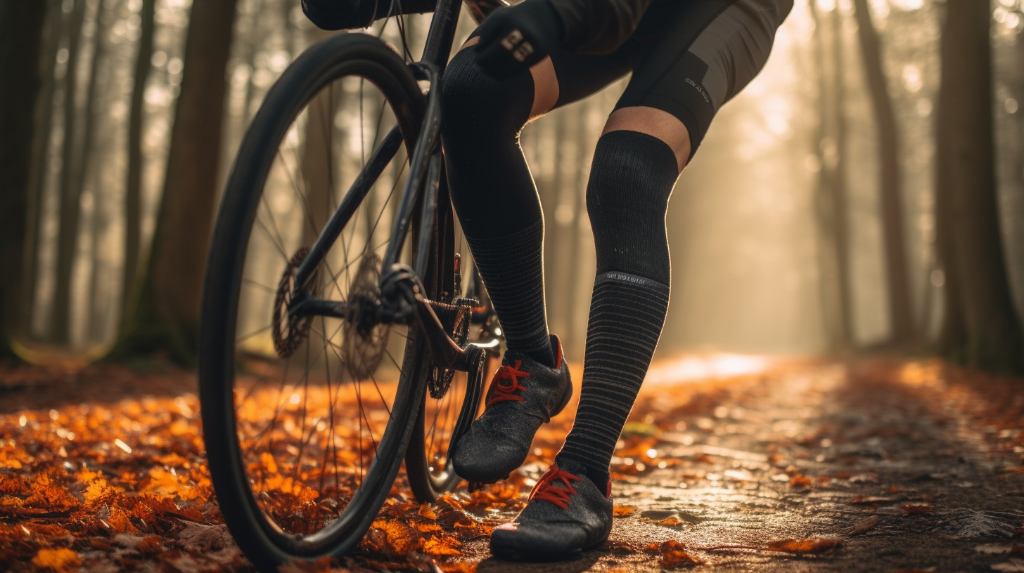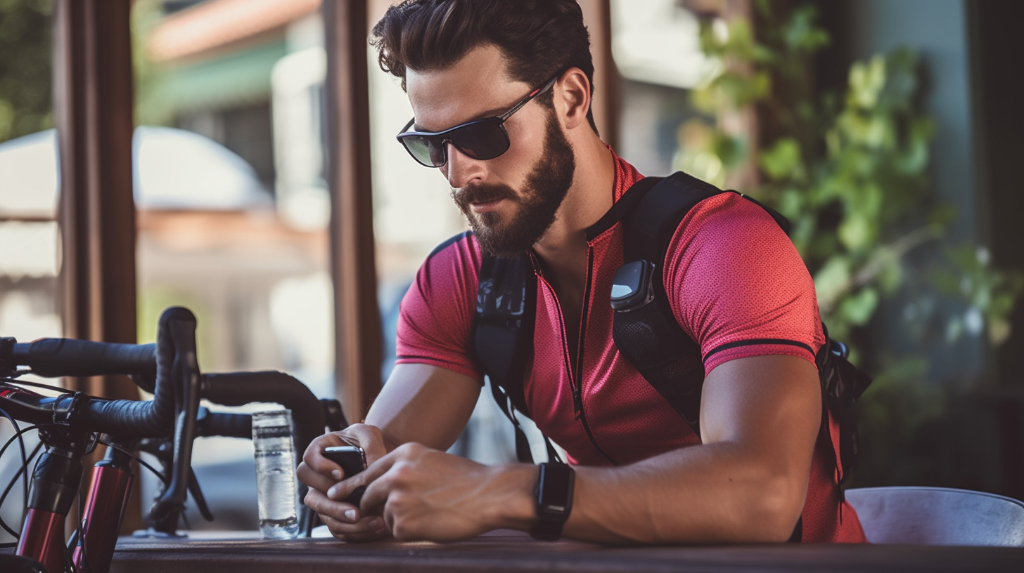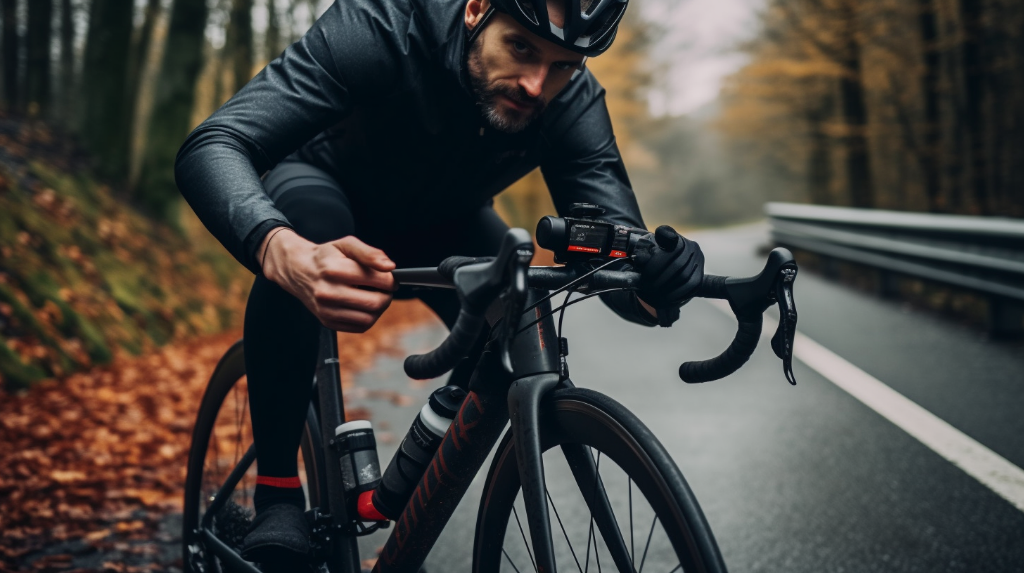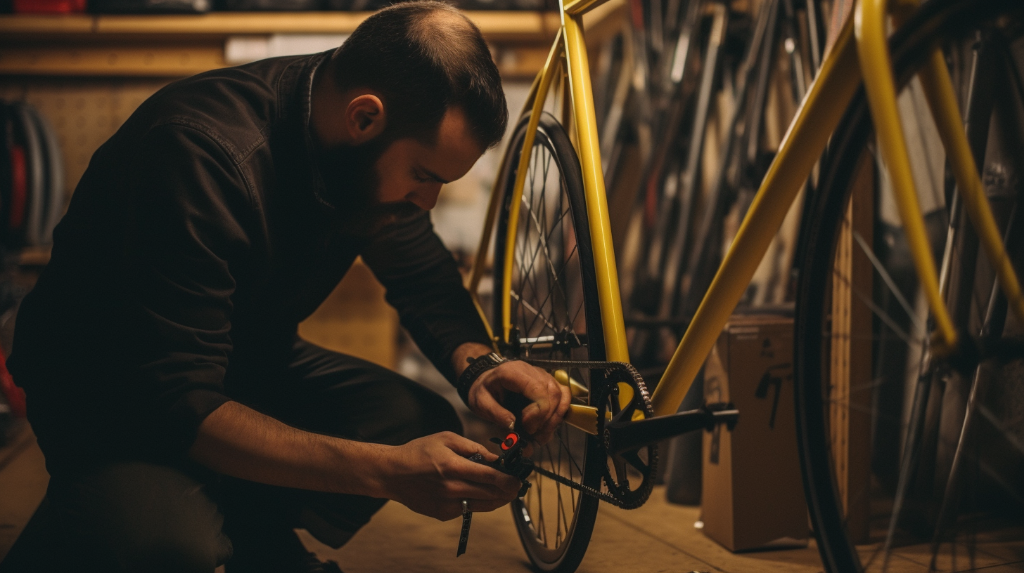Cycling has gained immense popularity over the years, not just as a means of transportation, but also as a form of exercise and a beloved hobby. As more and more people hop onto the saddle, it becomes increasingly important to address the topic of proper bike setup. A well-adjusted bicycle ensures comfort, efficiency, and most importantly, helps prevent potential injuries. One of the main components that often gets overlooked in this setup is the bike stem. But did you know that a low stem could potentially lead to knee pain? Let’s dig into this topic a bit more.
Understanding Bike Ergonomics and Fit
Just like a suit tailored to fit your body perfectly, a bike’s setup should also be customized to the cyclist. It’s not a one-size-fits-all scenario. The comfort and performance of a cyclist can be greatly affected by the fit of the bicycle. This includes the positioning of the handlebars and stem which play a crucial role in defining the overall geometry of the bike.
The Role of the Stem in Cycling
So, what exactly is a stem in terms of a bicycle? The stem is the component on a bicycle that connects the handlebars to the steerer tube of the bicycle fork. It plays an important role in determining the cyclist’s position and the overall geometry of the bike. The height and length of the stem significantly influence the reach and comfort of the rider. But can it cause knee pain if it’s too low? Let’s find out.
The Influence of a Low Stem on Body Position
Ever wondered how the positioning of your bike’s stem can affect your body? Well, let’s talk about it. A low stem, while it might make you look more professional and give you an aerodynamic edge, can significantly change your body posture while cycling. This change in posture can have a ripple effect on various parts of your body.
Impact on the Upper Body
Firstly, a low stem position can impact your upper body, especially the neck and shoulder muscles. This is because a lower stem forces you to lean forward more, which in turn requires your neck to extend more to keep your eyes on the road. Over a prolonged period, this can cause discomfort and even lead to strain in your neck and shoulder muscles. Remember, comfort should not be sacrificed for the sake of aesthetics or marginal gains in speed.
Impact on the Lower Body
Now, let’s shift our focus to the lower body, specifically, the knees. You might be thinking, “how can a low stem affect the knees?” Good question. When the stem is low, your hips rotate forward, causing your thighs to work harder to maintain pedal power. This not only puts additional strain on your thigh muscles but also impacts the knee joint due to the altered pedaling mechanics.
In essence, a low stem can create a chain reaction that starts from your upper body down to your knees, potentially leading to discomfort and injury if not addressed properly.
Connections Between Bike Setup and Knee Pain
So, how does a bike setup relate to knee pain? An improper bike setup, such as a low stem, can lead to poor alignment and positioning. This misalignment can cause your body, specifically your knees, to compensate during cycling, leading to unnecessary stress on the knee joint.
Imagine this: every time you pedal, your knees are working overtime to keep up with the demands of your bike’s setup. Over time, this can lead to pain and injury. This is why it’s crucial to ensure your bike setup is tailored to your body’s needs and comfort. After all, cycling should be an enjoyable activity, not a painful one, don’t you agree?
Knee Pain in Cyclists: Common Causes
As a cyclist, you might have experienced that gnawing pain in your knees at some point, right? It’s not only uncomfortable but can also significantly hinder your performance. But what causes this knee pain? That’s what we’re about to explore.
Overuse is often a primary culprit. Biking is a repetitive activity, and if you’re not giving your body enough time to rest and recover, you can easily strain your muscles and joints, including your knees.
Another common cause is a sudden increase in intensity or mileage. If you’re increasing your biking workload too quickly, your body may not have the time to adapt to the new demands, leading to stress and injury.
And then there’s the issue of poor bike fit. Yes, a bike that’s not properly adjusted to your body can contribute to knee pain. Incorrect saddle height, pedal position, or stem height can all affect your knee alignment and the way your muscles work.
Mitigating Knee Pain: Key Considerations
Now that we’ve understood the common causes, it’s time to look at some strategies to prevent knee pain. Remember, prevention is always better than cure!
First up, never underestimate the importance of a good warm-up. It prepares your muscles for the activity ahead, reducing the risk of injury.
Regular strength and flexibility exercises are also crucial. These exercises can help your muscles better support your joints, including your knees, and maintain proper alignment.
And of course, a proper bike fit is key. A bike that’s adjusted to your body can help you maintain a comfortable and efficient cycling position, reducing the risk of knee pain.
- Warm-up: Prepares your muscles for the activity, reducing injury risk
- Strength and flexibility exercises: Helps muscles support joints and maintain proper alignment
- Proper bike fit: Ensures comfortable and efficient cycling position, reducing knee pain risk
Adjusting the Bike Stem: A Potential Solution
Have you ever thought about the fact that adjusting your bike stem might be the key to alleviating your knee pain? It’s true! If your stem is too low, it can put undue pressure on your knees, leading to discomfort and possible injury.
By raising the stem, we can change the angle of your body on the bike, potentially redistributing the weight and strain that might be causing your knee problems. Of course, every cyclist is unique, and what works for one might not work for another. But, it’s worth giving a try, isn’t it?
Remember, adjusting your bike stem is not a one-time fix-all solution. It will require some trial and error to find the most comfortable and efficient position for you. You may also need to make additional adjustments to your bike setup, such as your saddle height and position, to achieve the best possible fit.
When to Seek Professional Help
While minor adjustments can be made on your own, there are times when it might be best to seek help from a professional. But how do you know when it’s time to make that call? Here are some signs:
- Persistent or worsening knee pain even after making adjustments
- Experiencing discomfort in other areas, such as your back or neck
- Inability to find a comfortable position on your bike despite multiple adjustments
- Signs of overuse injuries, such as swelling or decreased range of motion
- Any pain or discomfort that prevents you from enjoying your ride
Professional bike fitters and physical therapists have the knowledge and tools to assess your situation and provide personalized solutions. They can help you optimize your bike setup and teach you exercises to strengthen your body and improve your cycling form.
Final Thoughts on Bike Setup and Knee Pain
Now that we’ve made it to the end, you should have a better understanding of how a low bike stem can contribute to knee pain. More importantly, you’ve learned how adjusting your stem and seeking professional help when necessary, can make a world of difference in your cycling experience.
Remember, cycling is supposed to be enjoyable! And nothing kills the joy of a good ride like discomfort or pain. So, take the time to ensure your bike setup is well-adjusted to your body. Not only will it enhance your performance, but it will also go a long way in preventing injuries like knee pain. After all, isn’t it better to spend a little time adjusting now than to deal with pain and injury later?
So, what are you waiting for? Grab your tools and start adjusting! Your knees will thank you!

Ever wondered why your cycling session leaves you with more discomfort than joy? Or why you’re not quite reaching your performance potential? The answer could lie in the height of your saddle. Ensuring the correct saddle height is paramount for comfort, riding efficiency, and injury prevention. Across the cycling community, there’s an ongoing debate about the best method to determine the appropriate saddle height. Some swear by the Heel Method, others favor the Inseam Method, while some cyclists stand by the 109% Inseam Method. But which one is the best? Let’s find out.
The Importance of Correct Saddle Height
Perhaps you’re asking yourself, “Why does saddle height matter?” Well, saddle height plays a critical role in your cycling experience. Not only does it impact your comfort levels, but it can also significantly affect your performance. An incorrect saddle height can lead to inefficient pedaling, reducing your power and speed. Worse still, it may cause discomfort or injuries over time. A saddle set too high can put unnecessary strain on your lower back and hips, while a saddle too low can lead to knee problems. So, getting it right is essential!
Overview of Saddle Height Methods
Now that we’ve established the importance of correct saddle height, let’s take a look at the common methods used to determine it. The three most popular methods among cyclists are the Heel Method, the Inseam Method, and the 109% Inseam Method.
The Heel Method is the simplest and most commonly used. It involves sitting on the saddle with your heel on the pedal at its lowest point. If your leg is straight, then the saddle is at the correct height.
The Inseam Method, on the other hand, requires a bit more calculation. It involves multiplying your inseam length by 0.883 and setting this as your saddle height.
Last but not least, the 109% Inseam Method is a little more complex. It involves calculating 109% of your inseam length and setting this as your saddle height.
Each method has its own merits and drawbacks, and there’s no one-size-fits-all approach. So, which one should you choose? That’s a question we’ll delve deeper into in the next section.
In-depth Look at Saddle Height Methods
Isn’t it fascinating how something as simple as the height of your saddle can impact your cycling experience? It’s not just about comfort – it’s about efficiency, reducing the risk of injury, and maximizing your performance. Let’s take a more in-depth look at the different saddle height methods and what they entail.
The Heel Method
The Heel Method is arguably the most straightforward and commonly used approach to determining saddle height. It involves sitting on your bike with one heel on the pedal at its furthest point (i.e., the 6 o’clock position). If your saddle height is correct, your leg should be straight. This technique is based on the logic that when you replace your heel with the ball of your foot, you’ll achieve a slight bend in your knee, which is ideal for efficient cycling.
However, this method has its disadvantages. It assumes that all cyclists have the same foot length and ankle flexibility, which is not the case. Therefore, while the Heel Method is an excellent starting point, it may not provide the optimal saddle height for everyone.
The Inseam Method
The Inseam Method, on the other hand, uses a more personalized approach. It involves measuring your inseam (the length from your crotch to the floor, in your cycling shoes) and multiplying it by 0.883. The result is your optimal saddle height, measured from the center of the bottom bracket to the top of the saddle. This method takes into account the individual’s leg length, leading to a more personalized saddle height.
However, the Inseam Method doesn’t account for factors such as a cyclist’s flexibility or riding style. So, while it’s more personalized than the Heel Method, it may still not yield the perfect saddle height for everyone.
The 109% Inseam Method
The 109% Inseam Method is similar to the Inseam Method but uses a different multiplier. Instead of 0.883, your inseam is multiplied by 1.09. This calculation gives you the distance from the pedal spindle (with the pedal at the furthest point) to the top of the saddle.
This method is often lauded for its accuracy, but it has its limitations. For instance, it assumes a specific foot and pedal position that may not be comfortable or efficient for all riders. It also doesn’t account for variables like seat tube angle or crank length, which can significantly impact saddle height.
Summary Table
| Cause |
Description |
| Overuse |
Straining muscles and joints due to lack of rest and recovery |
| Sudden increase in intensity or mileage |
Rapid increase in biking workload causing stress and potential injury |
| Poor bike fit |
Incorrect bike adjustments leading to improper knee alignment and muscle function |
| Method |
Pros |
Cons |
| Heel Method |
Easy to execute, good starting point |
Doesn’t account for foot length or ankle flexibility |
| Inseam Method |
Personalized to individual’s leg length |
Doesn’t account for flexibility or riding style |
| 109% Inseam Method |
Often lauded for its accuracy |
Assumes a specific foot and pedal position; doesn’t account for seat tube angle or crank length |
Remember, these methods aren’t one-size-fits-all solutions. They are merely tools to guide you in finding the most comfortable and efficient saddle height for your unique cycling needs. And sometimes, a touch of trial and error is necessary to find your perfect fit.
Factors Influencing Saddle Height
Have you ever wondered why two cyclists of the same height might have different saddle heights? Well, the answer lies in the fact that several factors influence the ideal saddle height. It’s not a one-size-fits-all kind of thing, and it’s crucial to understand these factors to find the perfect height for you.
First and foremost, the rider’s flexibility plays a significant role. If you’re more flexible, you are likely to be comfortable with a higher saddle as it allows you to extend your leg more fully without discomfort. On the other hand, those with less flexibility might find a slightly lower saddle more comfortable.
Type of cycling is another factor to consider. Are you into road cycling, mountain biking or maybe you’re a triathlete? Each type of cycling has its specific posture and thus requires a different saddle height. For example, mountain bikers often prefer a lower saddle for better control on uneven terrain, while road cyclists might opt for a higher saddle for better power transfer and efficiency.
Lastly, your leg length can also affect your saddle height. Two people of the same height can have different leg lengths, and this should be taken into account when setting your saddle height. A person with longer legs will likely need a higher saddle compared to someone of the same height but with shorter legs.
Adjusting Saddle Height for Comfort and Performance
So, now that we’ve discussed the factors that influence saddle height, let’s move on to how you can fine-tune your saddle height for maximum comfort and performance. It’s all about making small changes and testing them out, right?
First things first, start with a basic measurement using one of the methods we discussed earlier. Once you have a baseline, you can start making small adjustments. Remember, even a few millimeters can make a big difference in how your saddle feels!
Next, try out your new saddle height. Go for a short ride and pay attention to how it feels. Do you feel more comfortable? Do you feel like you’re getting more power with each pedal stroke? Or maybe you’re feeling some discomfort or pain? It’s important to listen to your body during this process.
If you’re not quite satisfied with the feel, don’t be afraid to make more adjustments. Sometimes, it’s a matter of trial and error until you find the perfect height. But once you do, you’ll notice a significant improvement in your comfort and performance on the bike. Now that’s what we’re talking about!
Common Mistakes in Setting Saddle Height
When it comes to setting the perfect saddle height, even seasoned cyclists can make errors that lead to discomfort, decreased performance, or even injury. So, what are these common mistakes? And more importantly, how can you avoid them?
- Setting the saddle too high: This can cause your hips to rock side to side as you pedal, leading to discomfort and inefficient riding. The solution is to lower your saddle until your leg is slightly bent at the bottom of your pedal stroke.
- Setting the saddle too low: This can result in knee pain and reduced power output. The fix is to raise your saddle until your knee is slightly bent at the bottom of your pedal stroke.
- Ignoring discomfort: If something doesn’t feel right, don’t ignore it. Listen to your body and make necessary adjustments to your saddle height.
- Not rechecking saddle height after changes: If you’ve changed your cycling shoes, pedals, or even your cycling shorts, recheck your saddle height as these changes can affect your riding position.
Final Thoughts on Saddle Height
Phew! We’ve covered a lot of ground in this post, haven’t we? From the importance of correct saddle height to the different methods used to determine it, it’s clear that this is a topic that matters to every cyclist.
- The right saddle height is crucial for comfort and performance: It can make the difference between a ride that’s a joy and one that’s a chore.
- Different methods suit different riders: Whether it’s the Heel Method, the Inseam Method, or the 109% Inseam Method, the best one for you depends on your personal comfort and cycling style.
- Common mistakes can be easily avoided: By being aware of potential pitfalls, you can set your saddle height correctly and enjoy a more comfortable, efficient ride.
Remember, the best method for setting your saddle height is the one that works for you. So don’t be afraid to experiment, adjust, and re-adjust until you find your perfect fit. Happy cycling!









